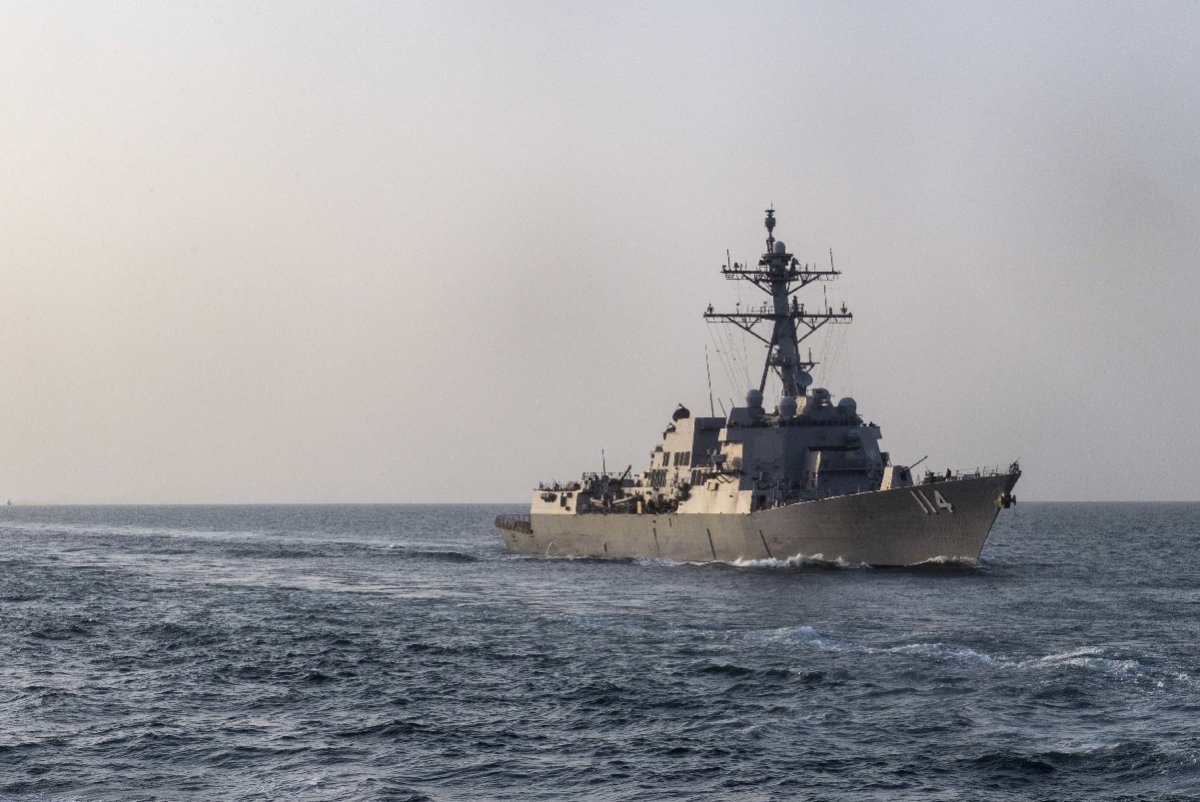hina says it put its navy and air force on alert as U.S. Navy vessels passed through the Taiwan Strait this week.
Newsweek reached out to the U.S. Department of Defense and U.S. military‘s Indo-Pacific Command by email with requests for comment.
Why It Matters
China considers Taiwan its territory—though the Chinese Communist Party has never ruled the island—and considers U.S. and allied warship transits through the Taiwan Strait to be provocations. Under international maritime law, waters outside China’s and Taiwan’s territorial zones are considered high seas, where freedom of navigation applies.
The U.S. and its allies routinely send warships through the strait to assert this right. This week’s transit appears to be the first under President Donald Trump‘s administration and comes amid continuing cross-strait tensions between Beijing and Taipei.
Guided missile destroyer the USS Ralph Johnson and a noncommissioned oceanographic survey ship, the USNS Bowditch, transited the strait Monday to Wednesday, according to a statement from China’s Defense Ministry.
In response, the Chinese navy’s Eastern Theater Command “organized its navy and air force troops to monitor the whole process of the U.S. vessels’ passage, and effectively managed the situation,” spokesperson Li Xi was quoted as saying.

“The U.S.’s actions sent the wrong signals and increased security risks,” Li added, stressing that the command’s forces “remain on high alert at all times” to safeguard the country’s sovereignty and regional stability.
The Ralph Johnson had last transited the waterway in August. The U.S. carried out eight such operations in the Taiwan Strait last year, according to a database maintained by Collin Koh, a senior fellow at Singapore’s Institute of Defense and Strategic Studies.
Five of these transits involved warships, including a joint passage with the Canadian frigate HMCS Vancouver. The remaining three were conducted by U.S. Navy P-8A Poseidon patrol and reconnaissance aircraft.
What People Are Saying
Commander Matthew Comer, Indo-Pacific Command spokesperson, told Reuters: “The transit occurred through a corridor in the Taiwan Strait that is beyond any coastal state’s territorial seas. Within this corridor, all nations enjoy high-seas freedom of navigation, overflight, and other internationally lawful uses of the sea related to these freedoms.”

